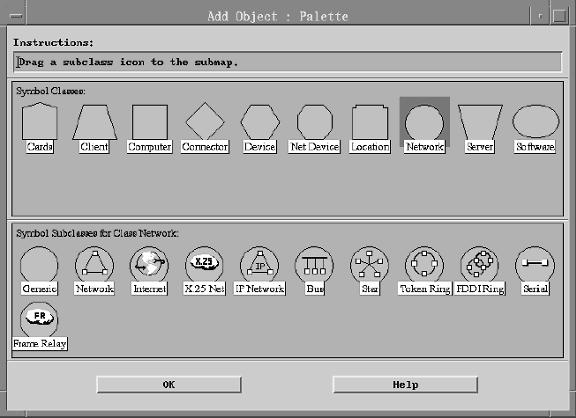| Tool Mentor: NetView - Identify Configuration Items |
 |
|
| Related Elements |
|---|
ContextTool mentors explain how a tool can perform tasks, which are part of ITUP processes and activities. The tasks are listed as Related Elements in the Relationships section. You can see the details of how processes and activities are supported by this tool mentor, by clicking the links next to the icons: DetailsThe IBM® Tivoli® NetView® product uses Simple Network Management Protocol (SNMP) to identify and manage the devices in your network using the definition described by common network device definitions called the MIB. There are standard MIBs and Enterprise-Specific MIBs. These MIB files describe the device and how information can be retrieved to identify the systems in your enterprise. Using these MIB files, it is possible to see how much detail and therefore how defined you can be about CIs that are related to devices in your environment. One option that is used to speed the population of NetView information within the tool is network discovery. It is a requirement to specify the type of automatic network discovery to be performed by the NetView server, which determines how much of the network is discovered. You select one of the following ranges for automatic discovery: local subnet only, backbone-only, or all networks. If you select the local subnet only option, the NetView component discovers the local subnet only. If you select the backbone-only option, the NetView component discovers connectors only (primarily routers and switches) and subnetworks. If you select the all networks option, the NetView component performs unbounded network discovery. The Tivoli NetView program uses an automatic network discovery process to generate and maintain a network topology database. The more nodes on the network that support an SNMP agent, the more efficient this discovery process will be, and the more complete and accurate the resulting configuration information. When a new node is discovered, it is added to the topology database and also to the list of nodes that is being monitored. If the newly discovered node supports an SNMP agent, information about its system configuration is retrieved and stored in the database. The table below shows the information that is retrieved. Network Discovery Configuration Information
After the node has been discovered, these MIB values are polled periodically. Any changes are reflected in the topology database. You can display this information for a node by using the MIB Browser. You can store additional enterprise-specific information with each node and network. This information, used with the predefined generic data that is generated by the Tivoli NetView program, can give you a clearer picture of your network's configuration. To store or load additional MIB information, use the MIB Loader. Some customers choose to forgo the discovery option and prefer to use a seed file to feed the information to NetView and therefore populate only devices that they are interested in. The use of either method is a decision point and neither perspective (discover the network or use seed file) is more correct than the other. They are merely representations of choices to facilitate different goals. When using NetView and trying to specify relationships between items that are known or discovered in NetView, you can create submaps to show these relationships. There is the concept of maps of relationships in the entire environment, but with NetView a user really just interacts with a submap because the extent of the information does not readily allow a single view of an entire enterprise. A submap is a collection of related symbols that are displayed in a single graphical representation on the screen. Submaps can be navigated by clicking and you will explore any nested relationships with yet another submap by navigating down the hierarchy. When creating submaps, there is a palette of shapes that can be used to facilitate the creation.
For additional information, refer to the NetView documentation. All current product manuals can be located on the IBM Web site in the Tivoli Information Center at http://publib.boulder.ibm.com/infocenter/tivihelp/index.jsp. For More InformationFor more information about this tool, click on the link for this tool at the top of this page. |
©Copyright IBM Corp. 2005, 2008. All Rights Reserved. |
